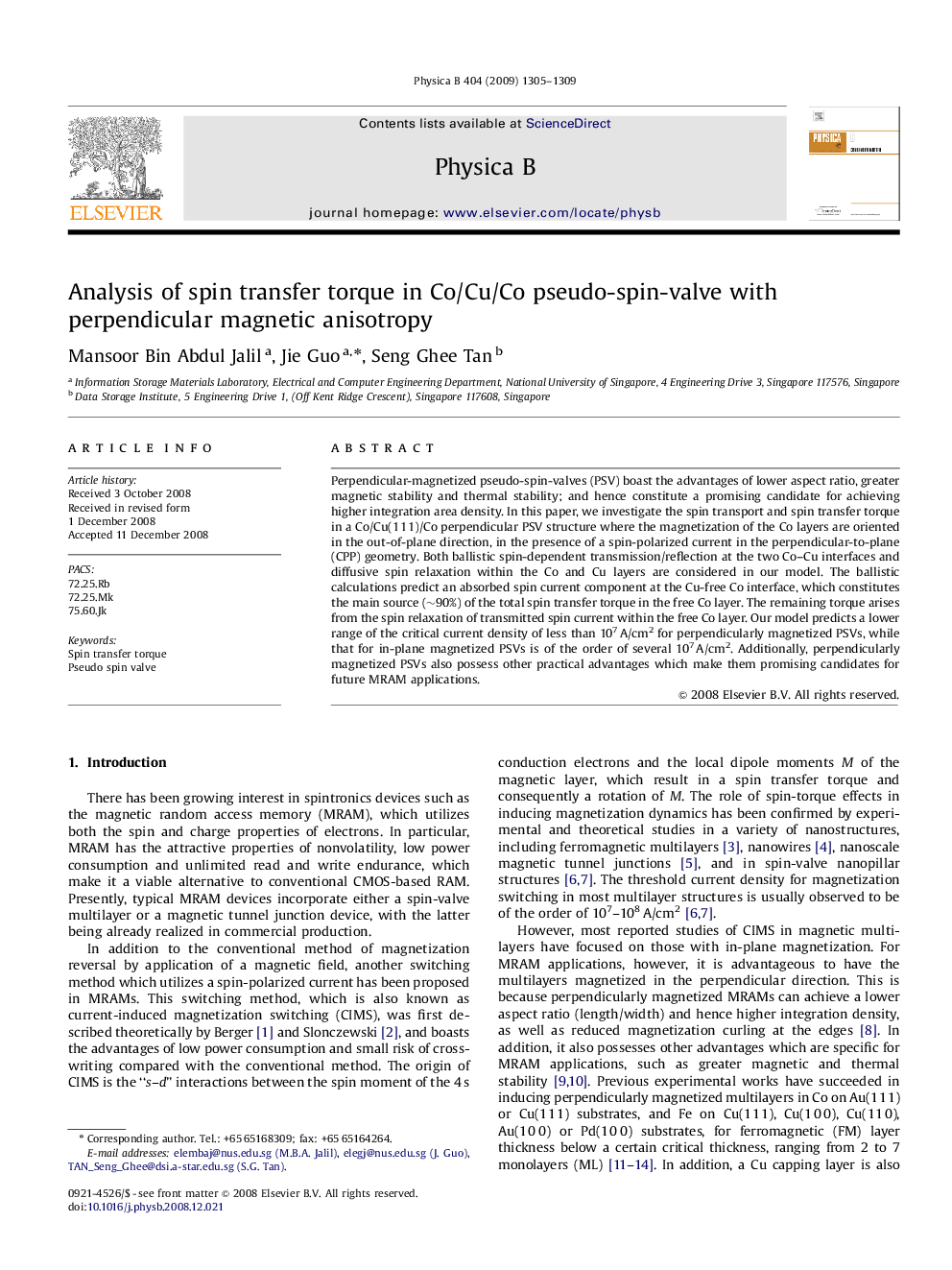| Article ID | Journal | Published Year | Pages | File Type |
|---|---|---|---|---|
| 1815456 | Physica B: Condensed Matter | 2009 | 5 Pages |
Perpendicular-magnetized pseudo-spin-valves (PSV) boast the advantages of lower aspect ratio, greater magnetic stability and thermal stability; and hence constitute a promising candidate for achieving higher integration area density. In this paper, we investigate the spin transport and spin transfer torque in a Co/Cu(1 1 1)/Co perpendicular PSV structure where the magnetization of the Co layers are oriented in the out-of-plane direction, in the presence of a spin-polarized current in the perpendicular-to-plane (CPP) geometry. Both ballistic spin-dependent transmission/reflection at the two Co–Cu interfaces and diffusive spin relaxation within the Co and Cu layers are considered in our model. The ballistic calculations predict an absorbed spin current component at the Cu-free Co interface, which constitutes the main source (∼90%) of the total spin transfer torque in the free Co layer. The remaining torque arises from the spin relaxation of transmitted spin current within the free Co layer. Our model predicts a lower range of the critical current density of less than 107 A/cm2 for perpendicularly magnetized PSVs, while that for in-plane magnetized PSVs is of the order of several 107 A/cm2. Additionally, perpendicularly magnetized PSVs also possess other practical advantages which make them promising candidates for future MRAM applications.
